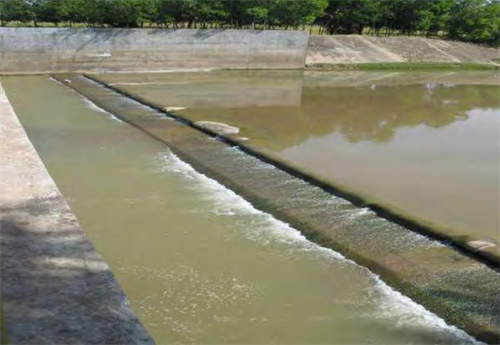What is the purpose of a spillway gate?
A spillway gate serves a critical function in managing water flow in dams, reservoirs, and other hydraulic structures. Its primary purpose is to control the release of excess water from the reservoir or dam to prevent overflow and flooding. Here are the key purposes of a spillway gate:
Flood Control:
One of the primary functions of a spillway gate is to regulate the water level in a reservoir during periods of heavy rainfall or snowmelt. By controlling the release of water, the spillway gate helps prevent the reservoir from reaching dangerous levels and reduces the risk of downstream flooding.
Reservoir Water Level Management:
Spillway gates are used to manage and control the water level within the reservoir. By adjusting the gate openings, operators can maintain the desired water level for various purposes, such as water supply, irrigation, and recreation.
Emergency Water Release:
In emergency situations, such as when the reservoir is approaching capacity, the spillway gate provides a mechanism for the rapid release of excess water. This emergency release helps avoid potential dam failure and catastrophic flooding downstream.
Hydraulic Energy Dissipation:
When water flows through the spillway gate, it may have a significant amount of kinetic energy. The gate design and configuration are engineered to dissipate this energy gradually, reducing the impact downstream and preventing erosion of the riverbed.

Controlled Downstream Flow:
Spillway gates structure allow for the controlled discharge of water downstream. By adjusting the gate openings, operators can regulate the flow rate, ensuring a gradual and controlled release that minimizes the impact on the river channel and downstream infrastructure.
Sediment Transport:
In addition to managing water flow, spillway gates play a role in sediment transport. The controlled release of water helps transport sediment downstream, preventing the accumulation of excessive sediment within the reservoir.
Hydropower Generation:
Some dams are equipped with hydropower facilities, and spillway gates contribute to hydropower generation. By controlling the flow of water through turbines, the gates play a role in harnessing energy from the flowing water.
Temperature Control:
Spillway gates can influence water temperature within the reservoir. By controlling the release of water, operators can manage temperature fluctuations, which is important for maintaining suitable conditions for aquatic ecosystems.
Regulation of Water Quality:
The controlled release of water through spillway gates can help regulate water quality. By adjusting the flow, operators can influence factors such as dissolved oxygen levels and nutrient concentrations.
Maintenance and Inspection:
Spillway gates provide a means for lowering the water level in the reservoir, allowing for maintenance and inspection activities on dam infrastructure. This is essential for ensuring the safety and integrity of the dam structure.
In summary, a spillway gate is a crucial component in water management systems, offering a means to control water flow, prevent flooding, and manage the overall health and safety of hydraulic structures. Its design and operation are carefully engineered to balance the needs of flood control, reservoir management, environmental considerations, and downstream impact.



